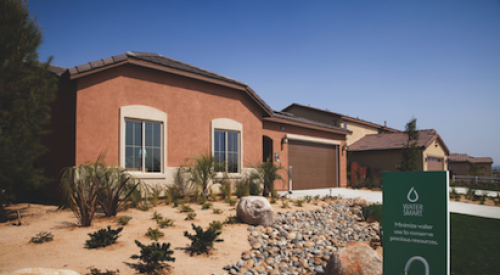|
You may have heard that home sales are down. What's that? You say you're experiencing a slowdown in your own company, and you're just trying to weather the storm, keep spending in check, and hold on until the upturn? Well, that seems logical.
But wait! This also might be a good time for inward reflection — into your company's operations and processes. You can't change the excess of housing inventory out there, but you can run a more efficient operation in which you don't carelessly annihilate profits you have every right to earn. In some cases this requires spending a bit more to make a whole lot more. What are the profit killers? What changes can you make in how you conduct business that will put more black in your bottom line? We have answers.
Profit Killer: Not building what buyers wantAlmost all the folks we spoke to agree this is one of the most common sources of lost profit that plagues builders: not building the homes their market demands.
"We in our industry are a lot like sheep," says Ross Robbins, a senior sales and marketing consultant with Shinn Consulting. "We build what we used to build — in other words, sheep go where they went last month or last week or yesterday."
Builders may have been successful with a particular floor plan or design in the past and figure they should stick with it. They assume the market without doing their research.
"Most builders have no [research] mechanism at all," says Robbins. "And you need a process where you are relentlessly doing that month after month because the market is always changing."
Remedy: Do the researchThere are easy, inexpensive ways to get a pulse on your market. Ask the Realtor community and your own sales staff what they are seeing. Also do competitive shopping.
"It's amazing how many builders never visit their competitor's developments," says Tom Stephani, president of Custom Construction Concepts in Crystal Lake, Ill. "When I was looking to build more of a Gen X, Gen Y product, I sent my son out to do mystery shops, just to do research and give me his impressions, because it's his generation."
Bruce Assam, COO for Holiday Builders in Melbourne, Fla., says focus groups have probably been the most powerful reference tool in understanding the marketing dynamics of their consumers. And it doesn't have to cost a lot.
"It's the cost of bagels and fruit, a nice area to have a conversation, and a tough person to take the good and the bad comments," says Assam.
Stephani says he also signs up for every opportunity to judge parades of homes and design competitions to take in what's in the marketplace. He also suggests perusing consumer publications you might not normally read, such as Good Housekeeping and Country Living.
Profit Killer: Giving away too much at closingThe builder sets the home price at a certain amount — say $200,000 — to get the margin he wants. The salesperson allows the customer to talk him into giving him incentives that effectively take the price down to $190,000.
"Where does that $10,000 come from?" asks Robbins. "There's only one place it can come from: profit. All your other costs are still committed."
When these sales incentives are given, Robbins tells builders to record the original budgeted contract price and not the actual contract price. Record what you expected to get, and subtract sales concessions as a first line item on your operating statement. Then indicate net sales revenue after concessions, building costs, financing and everything else until you're down to the profit.
"The reason we think that is so important is that it's a huge 2-by-4 upside the head when you look at how much you are just giving away," Robbins says. "We are either over the market, or our salespeople aren't selling value, which is more likely the case, or the market has changed and we have to get down and dirty and redesign our product so that we can hit a $190,000 price point and not give the store away."
Remedy: Sell value to the buyerSalespeople must learn to build value for the customer in the product they are offering. This can be accomplished by simply listening to what the customer is looking for in a home; showing them what you have that best fits their needs and desires; and letting them get excited about it.
"Ask 'Why are you looking for a new home? What dream you are trying to achieve?' Then price becomes less of an issue," says Robbins. "Find out what is of value to them, and then make sure they know that they are getting that. Then they won't be so all fired up to get extra concessions."
"I worked for a guy in Orlando that used to say the last thing you want to hear at a homeowner orientation is, 'I didn't know we were getting that,'" says Christopher F. Coleman, president of The Dearborn-Buckingham Group, a builder in Northfield, Ill. "That means they didn't pay for that. That means you didn't need to include it. It wasn't part of their buying decision."
Profit Killer: Poorly managed field operationsBuilders can get a bit lax in the way they do things in the field. They don't look for new processes and ways to be more efficient, not realizing the financial impact of a few weeks or months of extra construction time.
"It doesn't sound like a big deal, 'That home should have taken us three months, but it took us four,'" Stephani says. "But it really saps your resources." Your ability to build a home in the appropriate amount of time costs you a lot more money than you think.
"To build a home in three months takes X number of hours and supervision. If it takes four months, you've spent as much as an additional 33 percent on that home. Time is money," says Stephani. "Frankly, quality suffers too when the schedule gets dragged out. Believe it or not, the faster you build — within limits — the higher the quality of the home."
Remedy: Organize and document your processesTake a look at your operations to determine where breakdowns are occurring. You need documented, repeatable procedures that will make the production of a home flow smoothly and according to schedule.
"Too many times it's haphazard," says Stephani. "'Oh, this is the way we do it — through the start order out there and let's go.' The problem is most small builders create a system in their mind, but they don't share it with everybody. The only way that you can share it with people is if it's in writing."
The process starts way before you get out in the field. Builders need to establish a system that covers having well-thought-out and communicated plans and specs; completion of the estimate (using a dedicated staff member or if possible, an estimating program); purchasing (P.O. tracking is a must); selection of trades; and field start orders, change order procedures and selection protocol.
"It's important to have complete and accurate information before you start and that all the paperwork is in and complete from sales," says Coleman. "Don't be so anxious that you end up starting with incomplete information that will lead to a delay at some point in the construction cycle."
He suggests having scheduling systems in place that eliminate "dry runs" for trades where they make unnecessary trips to the job site because the previous trade hasn't finished, the materials aren't in, etc., and the trade can't get the work done.
"You need to have a relatively sophisticated — which doesn't mean expensive — system," Coleman says.
These are things that consultants, speakers and trainers stress to builders all the time, but it's hard to get a hold of these issues easily.
"I think plans and specs, estimating and purchasing all go into making the production process smoother," says Stephani. "But they are all separate functions. If you've got good plans and specs, good estimating and purchasing practices, then it's going to make your production processes better as well. A bad production process could take all that hard work and throw it in the trash can."
Profit Killer: Inaccurate, infrequent or ignored management reportsAccurate management reports help you see what's going wrong. The key to plugging the leaks is finding the leaks. The data reflected in these reports must be accurate — garbage in, garbage out. And they should be reviewed monthly. Having a profit report at the end of the year is too late.
"That's like sending a rocket to the moon that's off course by 1/10 of one degree," says Robbins. "You better be able to make a mid-course correction, because by the time it gets out that far, it's way wide of the moon."
Management-oriented reports are more helpful than accounting reports because they are more likely to clarify where the variances are.
"How long does it take to build a house? If we have budgeted building costs of $100,000 and it costs $500,000, or if we have warranty expense budget of ¼ of a percent of a house and we're at ½ a percent — those are leaks. We've got to measure those things."
Remedy: Spend the money, address warning signsIf you're a smaller builder, you may want to hire someone to tally these reports for you, or if you can, invest in an automated management reporting system. It's a worthwhile expense.
"We are too chintzy in our industry about spending money for systems and training," says Robbins. "Every other industry I know of spends between a half a percent and one percent of their annual revenue on technology. In this industry we spend less than a tenth of a percent. We are woefully behind."
And when you spot a problem, have a plan of attack.
"We work with some guys that have really good margins," says Robbins. "Almost without exception, when they get to a variance they put a multi-talented, multi-disciplined, multi-stake holder task force together, to figure out what went wrong and how to fix it."
This list of "profit killer cures" is by no means exhaustive. You can invest in landscaping to increase curb appeal and your asking price; work to deliver a defect-free home to save on callbacks and warranty costs; and reduce construction site waste. You get the idea. It's worth it to consider areas of waste in your company that can easily be avoided.
|











